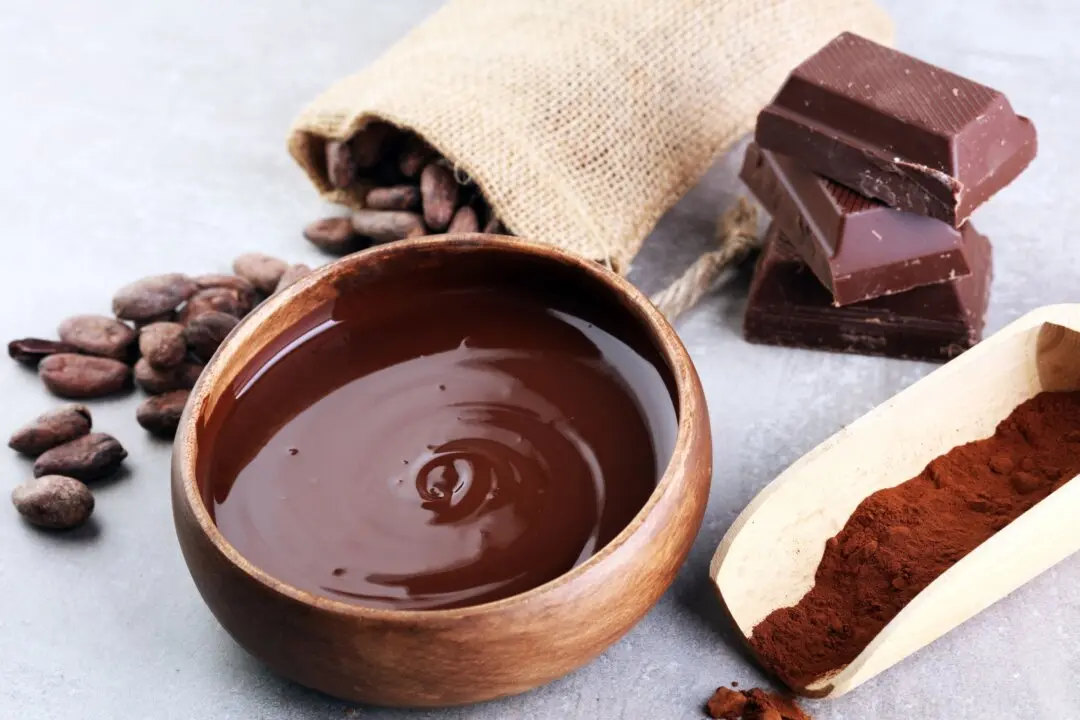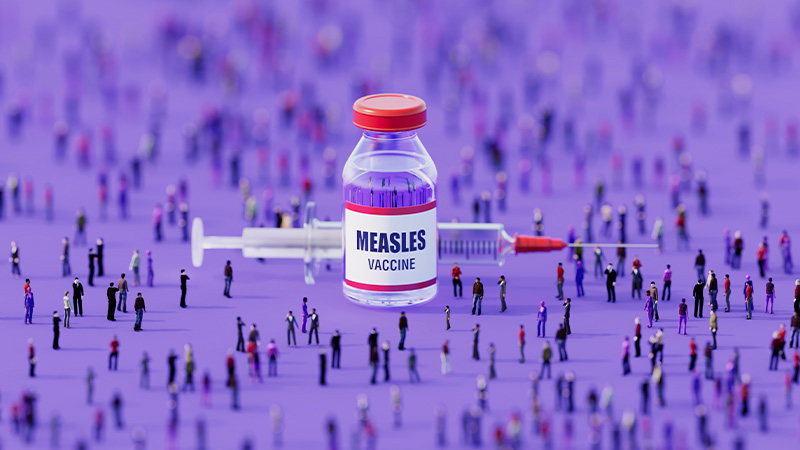A new study has found that many cocoa products are contaminated with heavy metals—including organic.
Is your favorite dark chocolate bar harboring a hidden health risk? A new study published on July 31 in Frontiers in Nutrition suggests that some popular dark chocolate products may contain concerning levels of heavy metals, particularly lead and cadmium.
The study, conducted by researchers from The George Washington University School of Medicine and Health Sciences and ConsumerLab.com, analyzed 72 dark chocolate and cocoa products sold in the United States from 2014 to 2022. Their findings shed light on a potential health concern that has been bubbling beneath the surface of the chocolate industry for years.
Why Study Heavy Metals in Chocolate?
Dark chocolate, long touted for its potential health benefits due to its high antioxidant content, has faced scrutiny in recent years due to reports of heavy metal contamination. Consumer media outlets and independent testing agencies, including Consumer Reports and As You Sow, have previously highlighted this issue.
Consumer Reports found heavy metals in popular chocolate brands including Hershey’s, Theo, Trader Joe’s, Godiva, Hu, and Equal Exchange, according to their 2022 report. A report by As You Sow also revealed elevated heavy metals in various chocolate products tested between 2014 and 2017. These earlier reports raised concerns about the safety of dark chocolate consumption, particularly for vulnerable populations such as children and pregnant women.
Given these concerns, Leigh Frame, director of integrative medicine at George Washington University and co-lead of the study, aimed to explore the significance of this contamination.
“We know chocolate is a plant that is particularly good at absorbing heavy metals from the soil and is grown in areas where there are heavy metals in the soil. So, it seemed like a logical area of concern. Also, often people think of chocolate as a supplement—like I’m getting my daily dose of chocolate because it’s good for me, right? We were interested to see if people consuming chocolate for health benefits really do get those benefits because there is also potentially heavy metal exposure,” Frame told The Epoch Times in an interview.
Study Design
The researchers analyzed popular cocoa-containing products from 2014 to 2022, including Ghirardelli, Hu, Lily’s, 365 Whole Foods Market, Nestle, Now Real Food, Baker’s, and Good & Gather.
All products were produced in the United States or Europe but sold only in the United States. The products were divided into four cohorts based on the year of purchase: 2014, 2016, 2019, and 2022. All products were tested for lead, cadmium, and arsenic content. Two primary standards were used to assess the levels of contamination:
- The U.S. Food and Drug Administration (FDA) established interim reference levels (IRLs) with the following allowable intake levels:
- Lead: 2.2 micrograms (mcg) per day for children under 7 years old
- Lead: 8.8 mcg per day for women of childbearing age
While the FDA has established IRLs for lead, it has not set official limits for cadmium or arsenic in food products.
- California Proposition 65 (Prop 65) is a more stringent state-level regulation that established the following maximum allowable dose levels (MADLs):
- Lead: 0.5 mcg per day
- Cadmium: 4.1 mcg per day
- Arsenic: 10 mcg per day
Study Findings
The new study’s findings paint a complex picture of heavy metal contamination in dark chocolate:
- Lead: 43 percent of products tested exceeded Prop 65 limits, but 97.2 percent of the products fell below FDA IRL limits.
- Cadmium: 35 percent of products exceeded Prop 65 limits.
- Arsenic: No products exceeded Prop 65 limits.
For all products tested, mean concentrations of both lead (0.615 micrograms/serving) and cadmium (4.358 mcg per serving) exceeded Prop 65 standards. However, median concentrations of lead (0.375 mcg per day) and cadmium (3.03 mcg per day were below Prop 65 standards, suggesting that a few highly contaminated products may have skewed the overall results. 97.2 percent of all products tested fell below the FDA IRLs for lead.
“Our hypothesis was that organic products would be lower in heavy metals because they were not going to have fertilizers or pesticides used on them that were contaminated with heavy metals. But it’s exactly the opposite,” Frame said.
Why organic products had higher levels of heavy metals is unclear. Frame questioned if fertilizers and pesticides may not be adding as many heavy metals to food as previously thought.
“Also, someone that is growing an organic product is likely to treat it more carefully and gently. Perhaps the more gentle processing is allowing more residual heavy metals, compared to being extracted through some of the harsher processing methods that other companies are using. But that is purely a hypothesis” Frame added.
Health Concerns: Lead and Cadmium
There is no known safe level of lead in the blood since even low levels can produce toxic effects, according to a 2021 article in Toxics. The central nervous system is particularly vulnerable to lead, potentially resulting in cognitive decline, fine motor control impairment, and attention-related issues in both children and adults, according to the article.
IQ test scores were lower among children exposed to lead, according to a 2022 review in Systematic Reviews. The authors stated that lead exposure “can have irreversible effects on children’s mental performance.”
While less notorious than lead, cadmium exposure can also pose significant health risks. Cadmium exposure is a “cardiovascular risk factor” that may initiate and promote the progression of atherosclerosis, according to a review in Current Atherosclerosis Reports. Cadmium may also increase blood pressure and risk of kidney damage, according to the review. Increase risk of fracture may also increase following cadmium exposure, according to a 2016 review in Medicine.
Frame and her research team question whether the proposed benefits of cocoa outweigh the possible risk of heavy metal exposure. “It’s hard to say whether these benefits are really truly beneficial for the average human,” she said.
According to Frame, while dark chocolate has been associated with improved cardiovascular health, cognitive performance, and reduced chronic inflammation, these potential health benefits have been modest.
For example, a 2021 review in Nutrients concluded that cocoa products improved triglycerides, however, there was no effect on blood pressure, blood glucose, cognitive function, skin, anthropometry, or quality of life regardless of form, dose, or duration when consumed among healthy people.
“As with anything, it has to do with what is the background diet. So, you have someone that has a very low polyphenol, low flavonoid diet, and chocolate is one of their predominant sources. Then in terms of the flavonoids, it may be very beneficial. That’s why coffee is so beneficial for the average American because their diet is very low in polyphenols. And coffee is very rich in polyphenols and so it’s a really important source,” Frame said.
Frame suggests that potential benefits from cocoa may be similar. “If you have someone who already has a rich source of polyphenols in the diet, the contribution of chocolate is going to be pretty minimal. And then that person is exposing themselves to more heavy metals from the chocolate without getting the health benefits.”
Moreover, the potential risks associated with heavy metal exposure have not been fully accounted for in previous studies promoting the health benefits of dark chocolate, according to Frame. She suggests a better approach is to look at the individual and ask if they are meeting their flavonoid levels and then use chocolate to increase those levels.
For those concerned their love of dark chocolate could be at risk, it is also worth nothing that any risk is a matter of moderation. The GWU study concludes that “ if contaminated products as a whole are consumed in small amounts and infrequently by most, these contaminants may not be a public health concern (though, perhaps still an individual concern); in contrast, if many such products are consumed fairly regularly by the average consumer, the additive exposure may be a public health concern.”
The Epoch Times reached out to Lily’s, 365 Whole Foods Market, Nestle, Now Real Food, Baker’s, and Good & Gather, but they did not respond by publication time. Responses from Ghirardelli and Hu can be found in an update at the bottom of this article.
Christopher Gindlesperger, senior vice president of public affairs and communications for the National Confectioners Association, told The Epoch Times that “Chocolate and cocoa are safe to eat and can be enjoyed as treats as they have been for centuries. Food safety and product quality remain our highest priorities and we remain dedicated to being transparent and socially responsible.”
Where Are the Heavy Metals Coming From?
Cocoa trees can absorb heavy metals that naturally occur in the soil, as well as heavy metals from environmental contamination. The main sources of heavy metal contamination in the soil are livestock manure, irrigation with wastewater or polluted water, application of sewage sludge, use of metallo-pesticides or herbicides, phosphate-based fertilizers, and atmospheric deposition, according to a 2019 review in Environment International.
“We undervalue the soil as a source of heavy metals, particularly in certain regions. There is a huge variation in regions. But, right now, when you buy a chocolate bar, you have no way of knowing where those beans came from because it’s not labeled,” Frame told The Epoch Times.
The presence of heavy metals in chocolate is partly attributed to post-harvesting contamination as well. For example, after fermentation, the cocoa beans are typically spread out to dry in the sun for several days. During this time, they are exposed to environmental contaminants, including lead-laden dust and dirt, according to Consumer Reports. This lead can come from industrial pollution in nearby areas, residual lead in soil from past use of leaded gasoline, or airborne particles containing lead.
As the beans dry, this lead-containing dust can settle on and adhere to their surface. Unlike cadmium, which is thought to be absorbed into the beans through the plant’s root system, lead contamination may be largely a surface-level issue that occurs after the beans have been harvested, according to Consumer Reports.
Frame and her team are advocating for enhanced surveillance of heavy metal contamination in cocoa products and suggest that better quality control practices during harvesting and manufacturing could help mitigate the problem. “Ideally they would test every batch.”
For consumers, Frame envisions a voluntary labeling system that is simple to understand. “The average person needs a stoplight type label that says, this is a moderate risk chocolate versus this is a high-risk or low-risk product. What I hope would happen is the companies that start putting it on there will see that people are more likely to buy their products, and then maybe other companies will follow suit.”
Implications and Takeaways
For most people, eating a single serving (one ounce) of dark chocolate is unlikely to pose a significant health risk, according to Frame.
“The reason we recommend one ounce is because that quantity is often studied for health benefits and you have to imagine that the heavy metals in one ounce are not reaching a level that’s becoming problematic,” she said.
However, consuming multiple servings could lead to excessive exposure.
“It’s very easy to over-consume chocolate. It’s something that can easily go from one to five or six servings. If people are having one ounce a day, maybe it’s okay. But if they’re having five servings a day and are getting astronomical levels of heavy metals, that’s a concern.”
Another potential concern is combining chocolate consumption with other food sources of heavy metals, such as teas and spices, Frame added.
The Bigger Picture: Cumulative Exposure
Dark chocolate is just one potential source of heavy metal exposure in our diets. According to a 2019 review in Environmental International, a growing body of research has identified concerning levels of heavy metals in various food crops, including:
- Fruits
- Leafy vegetables—green cabbage, spinach, cauliflower, lettuce, kale
- Root vegetables—radish, turnip, carrot
- Wheat
- Rice
- Soybean
- Corn
- Garlic
Heavy metals are also potentially problematic in some marine fish, seafood, herbal medicines, herbal teas, spices, fruit juice, as well as drinking water, particularly in areas with aging infrastructure or natural geological sources of contamination.
“Additional research into cumulative heavy metal exposure from the whole diet is needed. It’s not about excluding any of these foods. There is no zero exposure to heavy metals. You cannot completely exclude them from your diet. What you want to do is make sure your exposure is not too high,” said Frame.
What Can Consumers Do?
This new study serves as a reminder that even seemingly healthy foods can harbor possible hidden dangers. While dark chocolate has been associated with potential health benefits, it faces scrutiny for its heavy metal content. As consumers, we can balance the potential benefits against these risks. According to Frame, chocolate enthusiasts can still savor their favorite treat while reducing heavy metal exposure by considering these strategies:
- Be aware that “organic” or other certifications do not necessarily mean lower heavy metal content. In fact, organic products may have higher concentrations, according to the study.
- Enjoy dark chocolate in moderation as part of a balanced diet. Frame’s suggested serving size is no more than one ounce per day.
- Vary sources of dark chocolate and cocoa products.
- Alternate between dark and milk chocolate if you can tolerate lactose. While dark chocolate offers more antioxidants and less sugar, it may contain higher levels of heavy metals due to its higher content of cocoa solids (where heavy metals tend to accumulate). White chocolate has no cocoa solids, making it another good option.
- Locate specific cacao brands that regularly test for heavy metals using third-party laboratories and have shown lower contamination levels. Organizations like Consumer Reports and As You Sow provide test results from common chocolate products. Although these results are snapshots in time, they may help identify which products might be safer choices.
- Diversify your diet to help minimize the risk of excessive exposure to heavy metals from any single source.
- Be particularly cautious with cocoa products if you are pregnant, breastfeeding, or feeding young children.
The Epoch Times received statements from two companies mentioned in the report.
Ghirardelli provided the following statement:
“Food safety and high quality are paramount for Ghirardelli and the entire Lindt & Sprüngli Group. For more information on the issue, you’re inquiring about, please see the statement issued by The National Confectioners Association and additional background the organization has shared here.”
“In regard to both media articles that have been published, we confirm that we comply (by a very large margin) with all applicable standards, including those in the California State Consent judgment, which are far-stricter than both the FDA and European Regulations. In addition, we have testing protocols in place to monitor the naturally-occurring trace amounts of heavy metals found in chocolate to ensure we are only bringing product to the market that is well below any applicable standard’s limit and is safe to consume. We have a more detailed response that is available to read on our website. Here is the link – https://hukitchen.com/pages/response.”
The 2022 statement issued by The National Confectioners Association notes efforts chocolate makers take to ensure the quality and safety of their products:
“An expert investigation conducted through our prior California Proposition 65 settlement concluded that cadmium and lead are present in cocoa and chocolate due to soil and that bean cleaning during processing cocoa beans reduces lead and cadmium in chocolate products,” noted that statement.
This story has also been updated to include comments from The National Confectioners Association.





